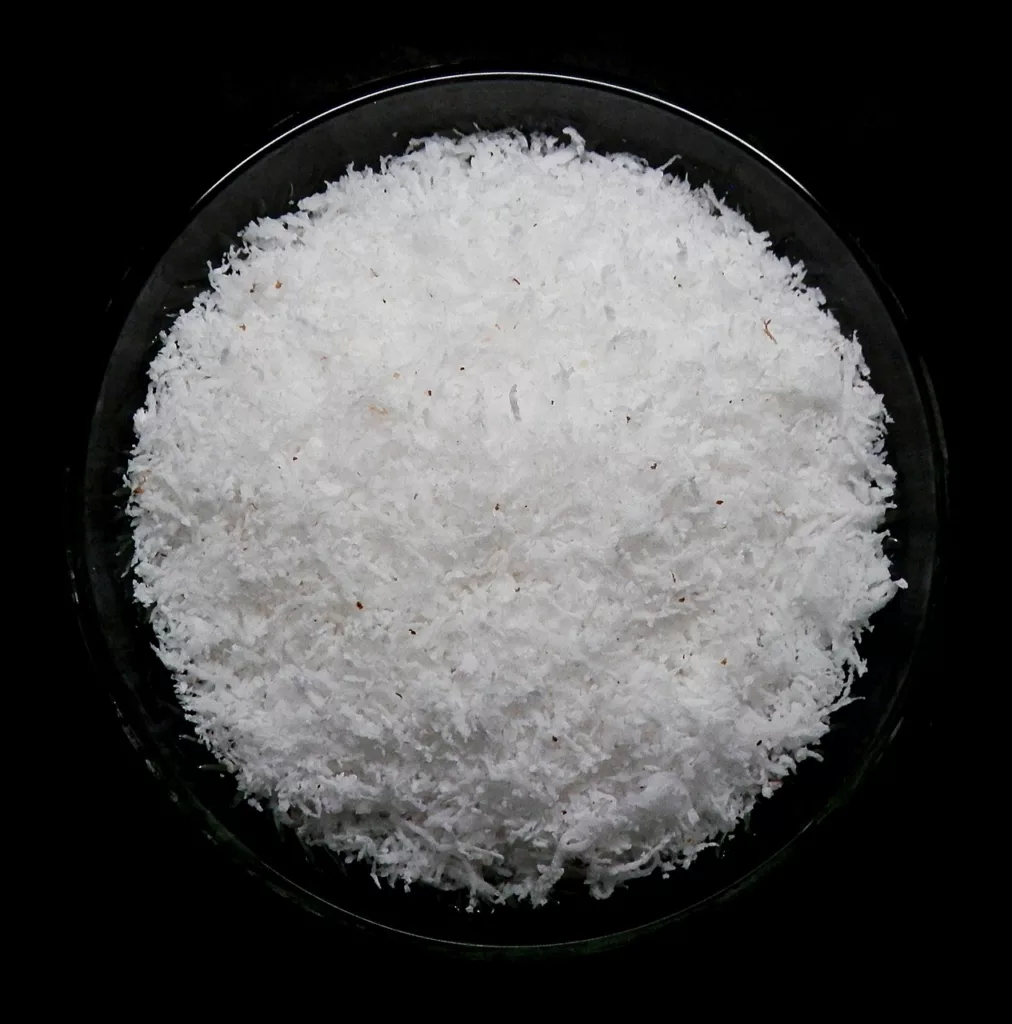Shredded coconut, a tropical delight, has carved a niche for itself in the culinary world. Its unique flavor and texture have made it a staple in many kitchens. However, like all-natural ingredients, it’s essential to understand its freshness, shelf life, and the signs of expiration.
This comprehensive guide will delve deep into the world of shredded coconut, ensuring that you maximize its potential in every dish you create, while also emphasizing the importance of its proper storage and usage.

What Is Shredded Coconut?
Shredded coconut is a common way of using coconuts in various culinaries and cooking styles. This finely grated ingredient is a star in numerous recipes, ranging from sweet desserts to spicy curries, refreshing beverages, and crunchy salads.
Its form—whether fresh, frozen, or canned—makes all the difference in its quality, texture, and flavor. Hence, recognizing the nuances of each form is crucial for achieving optimal culinary outcomes.
Shredded coconut adds more than taste to a dish. It actually elevates the experience of eating food.
Unlock Your Savings with Exclusive Offer Coupons
Save big while shopping for sustainable products! Grab your exclusive coupons today!

What Is The Average Shredded Coconut Shelf Life?

Once shredded, coconut has a designated shelf life that depends on how you store it.
The longevity of shredded coconut is influenced by various factors, including its moisture content, processing method, and storage conditions.
In a cool, dry pantry, it can retain its freshness for up to six months. However, with proper refrigeration or freezing, this duration can be extended to a year or even longer.
That said, for those who are particular about the peak flavor and texture of the coconut, it’s recommended to consume it within the first few months. For how long you store coconut also makes a difference. It’s a delicate balance between preservation and optimal taste.
The Science Behind Storing Shredded Coconut

Storing shredded coconut can be a daunting task without proper equipment and storing facilities. But the key to prolonging the life of shredded coconut lies in its storage. Proper storage is not just about longevity; it’s about preserving the taste and texture of the coconut.
Airtight containers are what you need here, as they lock in the coconut’s natural aroma and nutritional value, preventing external contaminants from affecting its quality.
For enthusiasts seeking longer storage durations, the refrigerator or freezer becomes the ideal storage solution.
However, a crucial tip to remember is to thaw the coconut adequately before using it in recipes to ensure the desired consistency and texture.
How To Store Shredded Coconut
Proper storage of shredded coconut is essential to maintain its freshness and flavor. There are multiple ways that you can store it in your fridge. From glass containers to reusable plastic bags, here are the vessels that you can use to store it effectively:

The Stasher Reusable Silicone Bag Multi-Pack is a versatile and durable alternative to single-use plastic bags. These silicone bags are freezer, oven, and microwave-safe, making them perfect for storing shredded coconut in your fridge.
They are easy to clean and their convenience and eco-friendliness make them a worthy one-time investment that’ll last years.

This set of airtight canisters is perfect for storing a variety of dry goods like shredded coconut, flour, and sugar. The airtight seal ensures your food stays fresh longer.
Best news? These are made from BPA-free, durable plastic. These containers are easy to clean and stackable, making them a practical addition to store shredded coconut in your home.

These high-quality mason jars are affordable and perfect for canning, preserving, and storing various foods and overnight projects. They come with secure, airtight lids that keep contents fresh.
Ideal for both beginners and experienced meal planners, they provide an excellent way to store homemade shredded coconut.
What To Do With Shredded Coconut?
The culinary applications of shredded coconut are truly endless. From lending a tropical twist to desserts to enhancing the richness of main courses and adding a zing to beverages, its presence is transformative.
For dishes that require dried shredded coconut, a pro tip is to rehydrate it by soaking it in water for approximately 30 minutes. This simple step can elevate the texture and flavor profile of the coconut, making your dish stand out. It’s these little nuances that can elevate a dish from good to great.

The Freezing Dilemma
The decision to freeze shredded coconut often divides culinary experts. Given its high-fat content, there’s a possibility that once thawed, the coconut may not revert to its original texture.
If you decide to tread the freezing path, ensure you use freezer-safe bags or containers. While this method can extend the coconut’s life by about three months, be prepared for subtle changes in its texture and flavor. It’s essential to weigh the benefits of extended shelf life against potential changes in quality.
Detecting and Discarding Spoiled Shredded Coconut
Ensuring the quality and safety of shredded coconut is important. So, how does one identify if it has gone bad?
When it comes to coconuts, it’s tricky! Start with a visual examination. Any discoloration, especially brown or gray shades, is a red flag.
The next step is to trust your nose. A rancid or unusual odor is a clear indication of spoilage. Additionally, if the coconut feels excessively dry or harder than usual, it’s safer to dispose of it. Prioritizing the quality and safety of the coconut guarantees that every dish you prepare is nothing short of perfection.

Conclusion
Shredded coconut, with its tropical allure and diverse culinary applications, is undeniably a cherished ingredient. Its versatility is commendable, but what’s equally important is understanding its freshness, shelf life, and quality. By storing it meticulously, being aware of its characteristics, and using it judiciously, you can ensure that every dish you create is not just delicious but a true testament to your culinary prowess. Embrace the world of shredded coconut and let it elevate your culinary adventures.
Want more sustainable food insights? Dive into our food blogs for expert hacks and tricks to elevate your eco-friendly culinary journey!
Want to read more like this?
Get similar stories and a free sustainability checklist delivered to your inbox.

Like our content?
Get similar stories and a free sustainability checklist delivered to your inbox.


















